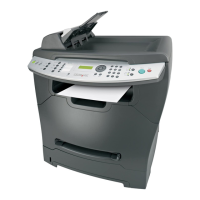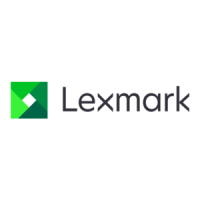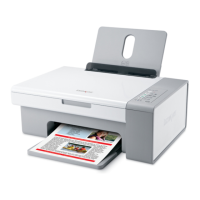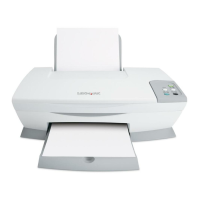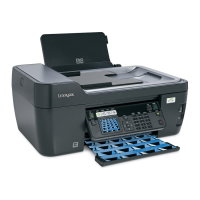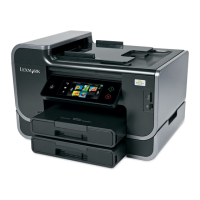The major adhesive‑related printing problem is printer and cartridge contamination. The adhesives are semi‑liquid and
may contain volatile components. If the sheet jams in the fuser, the adhesive can melt, thereby contaminating parts
of the printer or releasing fumes. To avoid exposing adhesive to the paper path guides, drive rollers, charge roller,
photoconductor drum, transfer roller, and detack fingers, use full label sheets.
Zone coating means placing the adhesive only where needed. Paper labels and integrated forms typically use zone
coating. In addition, a non‑adhesive border of 1 mm (0.04 inches) around the outside edge of the label sheet generates
good results. Check with your adhesive manufacturer or forms supplier for more information about designing labels
for your printer.
A stripped edge matrix along the outer border of the stock, combined with adhesive that does not ooze, helps prevent
adhesive contamination. This design requires a stiffer backing material to prevent damage when the sheet is aligned
on the reference edge. Generally, vinyl and polyester labels are well‑suited for this design. Paper and dual web designs
may require testing to determine which backing produces good results. For more information on matrices, see “Label
design guidelines” on page 25.
Make sure the release strength is adequate so labels stay attached to the liner and do not peel off in the printer.
Adhesives must be able to withstand pressures to 25 psi and fuser temperatures of 225°C (437°F) without delaminating,
creating hazardous fumes, or oozing around edges of labels, perforations, or die‑cuts. Shear strength should be strong
enough to prevent adhesive stringers. For more information, contact your forms supplier.
Face sheet (printable stock)
Paper, vinyl, and polyester are the most common materials used for printable stock. Your forms supplier can provide
information on whether the printable stock you want to use can withstand temperatures up to 225°C (437°F) and
pressures up to 25 psi. Carefully test the stock to make sure it functions satisfactorily with your printer.
Note: Temperatures vary by printer. For more information, see the section for your printer.
Topcoats
Topcoats for non‑paper labels may be either water‑based or solvent‑based. Avoid topcoats containing chemicals that
emit hazardous fumes when heated or exposed to pressure. Topcoats affect the print quality, feed reliability, and
adhesion of toner to the face sheet. Topcoats must be able to withstand temperatures up to 225°C (437°F) and pressures
up to 25 psi for 100 milliseconds to prevent fuser damage.
Note: Temperatures vary by printer. For more information, see the section for your printer.
Water‑based topcoats tend to be more conductive than solvent‑based topcoats and are more difficult to fuse. With
some water‑based topcoats and heavy liners, the fuse grade may fall below acceptable levels. Solvent‑based topcoats
tend to be lower in conductivity than water‑based topcoats. With some solvent‑based topcoats, fuse grade is within
acceptable levels when heavier liners are used.
Print quality may degrade when using topcoats on labels with heavier liners. Using a lighter liner may reduce the
appearance of splatter. Carefully test the forms to make sure the topcoat functions satisfactorily with your printer.
Label design guidelines
Labels with a stripped edge matrix do not have the area around the outer edge of the cut sheet. Labels with a total
strip matrix do not have the die‑cut stock around and between the labels. This makes it easy to peel the labels from
the backing.
Butt cut labels are cut flush to one another, with no extra area between them. Avoid using butt cut labels without a
stripped edge matrix.
Labels 25
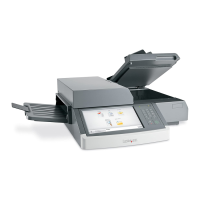
